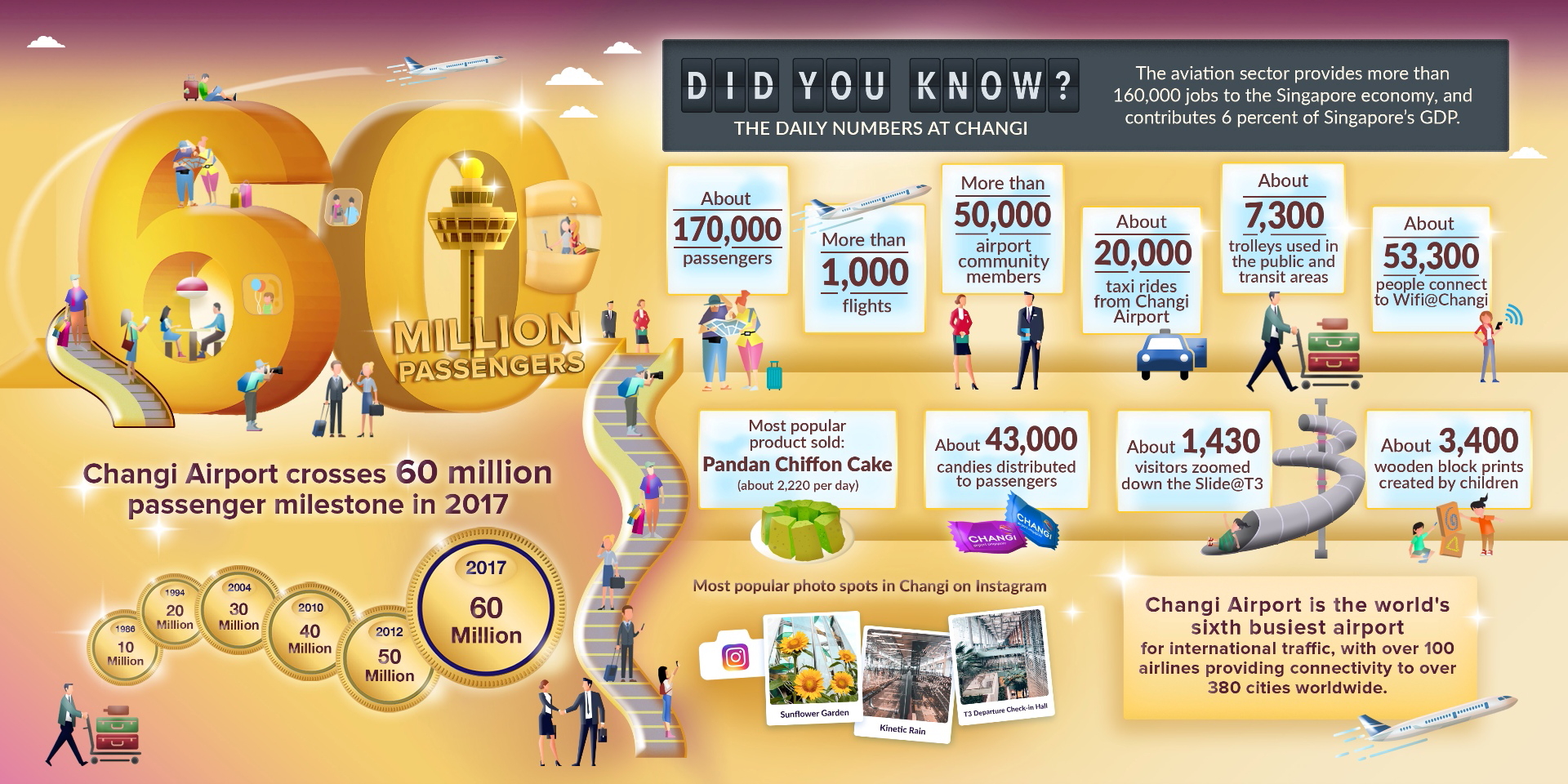|
Changi Airport Group celebrated the crossing of
yet another milestone on Monday, recording 60 million passenger
movements in 2017, a first in a calendar year.
With more than 60 million passengers now passing
through Changi Airport yearly, the aviation sector will continue
to be a key contributor to Singapores economy. It provides more
than 160,000 jobs, and contributes 6 percent of Singapores GDP.
The steady growth in aviation is expected to continue, with Asia
as the centre of aviation growth in the next 20 years.
Since Changi Airports opening in 1981, four
terminals have opened to cater for the airports growth, with
Terminal 4 commencing operations on 31 October this year.
Passenger traffic has increased steadily in the last 36 years. By
1986, Changi was already serving more than 10 million passengers
per annum (mppa), and this increased to 20 mppa in 1994, 30 mppa
in 2004, 40 mppa in 2010 and 50 mppa in 2012. In April this year,
the airport recorded its 1 billionth passenger since opening.

Changi Airport Groups Chief Executive Officer,
Mr Lee Seow Hiang said, We commemorate an important milestone in
2017 with record passenger traffic of more than 60 million. It is
a proud moment for all of us in the airport community and is the
result of years of hard work and dedication to grow the Changi air
hub to what it is today. It was only in 2012 that we marked our 50
million milestone. Five years on, we have increased annual traffic
by 20% or 10 million.
For November, Singapore Changi Airport
registered 5.17 million passenger movements, a year-on-year growth
of 8.1%. There was a 10.7% increase in airfreight throughput to
191,680 tonnes, while aircraft movements rose 4.8% to 31,140
landings and takeoffs.
Passenger traffic for all regions grew at least
6%. All of Changis top 20 country markets recorded positive
growth. Countries which achieved double digit growth include
China, Myanmar, United Kingdom and United States. Among Changis
top 20 routes, Phuket (+19%), Bangkok (+17%) and London (+14%)
were the fastest growing.
As at 1 December 2017, more than 100 airlines
operate at Changi Airport, connecting Singapore to some 380 cities
in about 90 countries and territories worldwide. With more than
7,000 weekly scheduled flights, an aircraft takes off or lands at
Changi roughly once every 90 seconds.
With the new Terminal 4, and our upcoming
development projects such as the expansion of Terminal 1, the
Changi East project as well as a new passenger terminal at Seletar
Airport, we are ensuring that our country's airports continue to
have sufficient capacity to meet the regions demand for air
travel in the decades ahead, and contribute to Singapores
economic success in the long run, added Mr Lee Seow Hiang.

See latest
HD Video
Interviews,
Podcasts
and other
news regarding:
Changi,
Traffic,
Arrivals.
|
